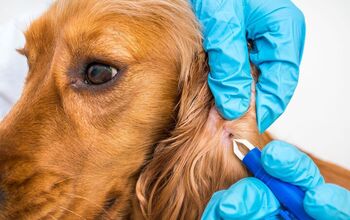When Can a Puppy Start Eating Kibble?

One of the most exciting milestones in your dog’s puppyhood is the transition from milk and soft foods to solid kibble. This marks a major step in their growth and development and ensures that they receive all the important nutrients for a healthy life. But even so, some owners are uncertain about when exactly kibble should be introduced.
Understanding the right timing for this can be crucial for their good development and overall well-being as it helps set a solid foundation for a healthy diet later on in life. So here’s what you need to know before you offer dry food to your puppy.
When Can a Puppy Start Eating Kibble?
In the early first few weeks of their life, puppies rely entirely on their mother’s milk for nutrition. Nature arranged it so that this milk provides all the essential antibodies that boost their immune system and nutrients that are vital for their early growth. Usually, puppies should stay with their momma and littermates until they are at least 8 weeks old. During this time, they gradually transition from nursing to exploring more solid foods.
Around 3 to 4 weeks of age, however, puppies begin showing more and more interest in the food that their mom is eating, and will often nibble on solid foods. These can be softened puppy food or kibble soaked in water. This helps them to become accustomed to all kinds of different textures and flavors, which in turn prepares them for eventually switching to dry kibble and other solid foods.
In general, puppies can begin eating dry kibble between 6 and 8 weeks of age. At this stage, their little teeth are developing, and they have the jaw strength needed to chew solid foods efficiently. Still, it is important to choose high-quality puppy kibble formulated specifically for their nutritional needs. Go for a formula that is based on natural, wholesome ingredients and doesn’t contain any nasty filler or artificial substances – meat should be the first ingredient on the list, followed by sources of fiber, vitamins, and minerals, such as veggies and fruit.
When introducing the dry kibble, start by mixing a small amount with their softened food. Then, gradually increase the ratio of kibble to softened food over several days, so they can become more comfortable chewing and digesting solid pieces. You will have to also monitor their stool during this period, to make sure they are adjusting to the new diet properly.
Keep in mind that puppies need frequent meals because of their high energy levels and rapid growth. Around the time they are 8 weeks old, they will usually need to be fed 3 to 4 times a day. As they grow older, you can gradually reduce that frequency to 2 to 3 meals per day, until they are 6 months old. Of course, you should always provide them with fresh water alongside their meals. If your puppy isn’t big on drinking water, you can always entice them with a pet water fountain that will keep their water fresh and cool and make the process more fun, ensuring your four-legged bestie is well hydrated throughout the day.
While it is tempting to spoil your puppy with treats and extra food, remember that overfeeding can lead to obesity and health problems later in life. So, follow the guidelines provided on the kibble packaging to ensure that you are feeding them the right portions. You can also seek the guidance of your vet, and they will help you adjust the portions based on your puppy’s age, growth rate, and activity levels.

A proud mama to seven dogs and ten cats, Angela spends her days writing for her fellow pet parents and pampering her furballs, all of whom are rescues. When she's not gushing over her adorable cats or playing with her dogs, she can be found curled up with a good fantasy book.
More by Angela Vuckovic

























